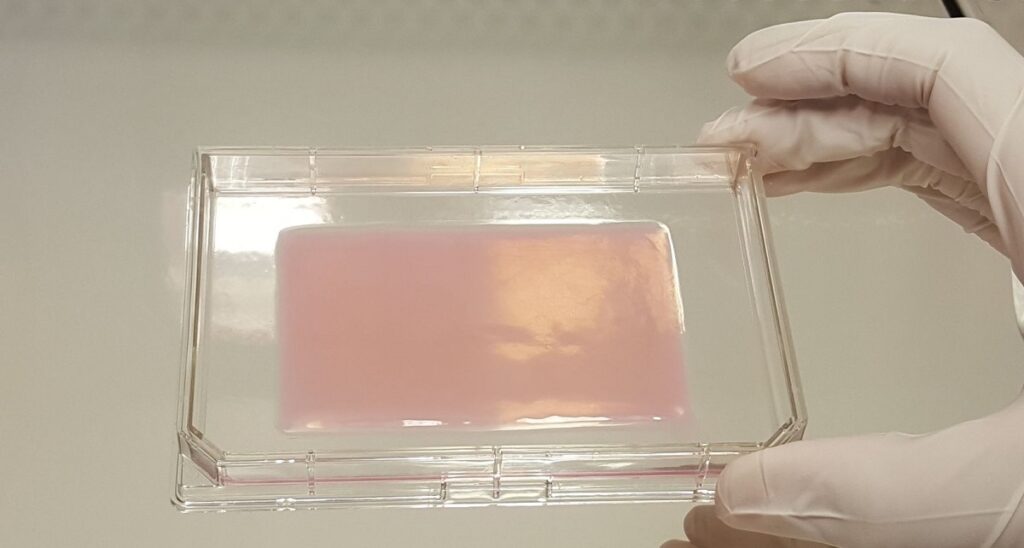3D bioprinting, a groundbreaking technology that prints bioinks mixed with living cells to construct natural tissue-like three-dimensional structures, is revolutionizing the field of regenerative medicine. This technology is increasingly being used for pharmaceutical development, drug validation, and tissue engineering, aiming to fabricate functional tissue for applications in regenerative medicine and drug testing.
The advantages of 3D bioprinting are manifold. It can mimic the real structure of the desired tissue or organ, paving the way for personalized medicine. It also holds the potential to repair or replace damaged tissues and organs, offering new hope for patients worldwide.
Scintica’s NGB-R: A Game-Changer in Bioprinting
Scintica’s NGB-R Next-Generation Bioprinting solution is a multimodal, 4D bioprinting platform designed to print live tissues and organs. It combines laser-assisted, micro-valve, and other technologies to create natural tissue-like structures, enabling new life-saving treatments. A selection of critical breakthroughs in 3D bioprinting applications include:
- Skin regeneration: Researchers are deploying 3D bioprinting to pioneer new techniques in skin grafting for burn victims and those with skin diseases.
- Opthalmology: Scientists have successfully used 3D bioprinting to create eye tissue, providing a model for studying the genesis of age-related macular degeneration and other eye diseases.
- Organ regeneration: A recent review highlighted the progress made in tissue engineering and regenerative medicine, including fabricating scaffolds, cells, tissues, and organs.
- Veterinary medicine: A review of recent advances in 3D bioprinting focuses on future regenerative therapies which could lead to improved treatments for various animal diseases.
- Advanced tissue modelling: Models that reproduce human physiology or pathology are being explored for the development of novel treatments and tissue transplantation.
Unique Features of Scintica’s NGB-R
The NGB-R integrates three different bioprinting techniques into one system, including laser-assisted bioprinting (LAB), bio-extrusion, and micro-valve bioprinting. This combination of techniques allows for versatile and precise printing capabilities.
The NGB-R system features a laser-assisted printing head, which enables high-resolution and accurate printing of bioinks, using a laser as the energy source. This laser-assisted bioprinting technique enables the creation of complex tissue-like structures.
Equipped with a 6-axis robotic arm, the NGB-R ensures precise and reproducible printing job sequences. This robotic arm enhances the precision and automation of the bioprinting process, leading to consistent and reliable results. Multi-axis robotic arms like these offer enhanced flexibility and greater capacity to place cells in complex geometries when compared with planar layer-based printers.
The NGB-R is designed to be user-friendly and integrates a multimodal bioprinter based on laser-assisted bioprinting. The system provides a user-friendly interface and sterile conditions for 3D printing tissue components.
Incorporating high-end robotics and automation tools, the NGB-R solution enhances precision and reproducibility. These tools contribute to the overall efficiency and reliability of the bioprinting process.
The Future of Bioprinting with Scintica’s NGB-R
Scintica’s NGB-R Next-Generation Bioprinting solution stands out for its integration of multiple bioprinting techniques, laser-assisted printing head, robotic arm, user-friendly design, and high-end robotics and automation tools. Our system represents a high standard in precision, versatility, and efficiency. It is a promising technology for a growing number of bioprinting applications, including regenerative medicine, tissue engineering, and drug testing.
Join the Bioprinting Revolution with Scintica
At Scintica, we are committed to pushing the boundaries of bioprinting technology. Our NGB-R Next-Generation Bioprinting solution is at the forefront of this revolution, offering unprecedented precision, versatility, and efficiency. Learn more about bioprinting with the NGB-R and how it can transform your work.
